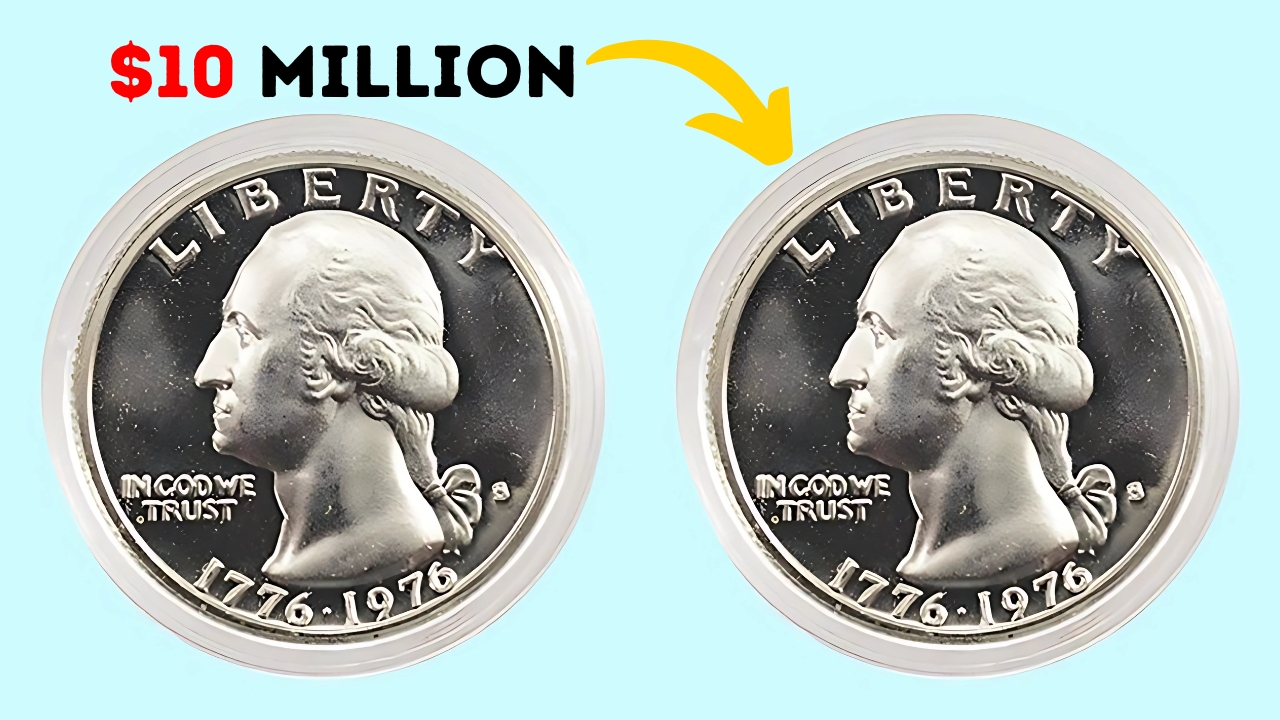5 Rare Bicentennial Quarters: Among the countless coins tucked away in change jars, lost in couch cushions, or exchanged in ordinary transactions, lie five remarkable Bicentennial quarters that have entered the realm of legend for coin collectors.
Each of these unique pieces is valued at an astonishing $10 million, showcasing the rarest of the rare—true unicorns among the 1.7 billion Bicentennial quarters minted from 1975 to 1976 to celebrate America’s 200th anniversary.
The most mysterious of these five quarters is often referred to as the “Dual-Strike Overlay.”
This particular coin experienced an extraordinary mint error, resulting in two full strikes at right angles to each other, creating an eye-catching overlay effect. The images of a drummer boy and a colonial soldier can be seen simultaneously from different perspectives.
Compounding its rarity, this coin features both copper-nickel and silver-clad compositions, resulting in a striking marbled appearance never previously recorded in American coinage.
When studied under special lighting, microscopic flaws indicate that this coin was minted at the Denver Mint during the midnight shift on July 4, 1976—a serendipitous detail that elevates its historical significance and value immensely.
The Missing Drummer Quarter: The Phantom Imprint
The second of the $10 million rarities features a stunning die error, where the drummer boy design appears as an elusive outline—present yet not quite there, primarily visible through light reflections rather than an actual impression.
Numismatists have dubbed this the “phantom imprint phenomenon,” a rarity so exceptional that only three other instances are known in the entirety of American coinage.
Intriguingly, microscopic analysis has revealed trace elements consistent with experimental alloys briefly considered by the Treasury before being discarded for the Bicentennial project.
How these elements came to be included remains one of the greatest mysteries of numismatics.
The Triple-Edge Quarter: Defying Physical Possibility
One of the most perplexing discoveries is the “Triple-Edge Quarter.”
Due to an error that metallurgists are still attempting to fully comprehend, this coin features what seems to be three distinct edges—the standard reeded edge, along with two additional raised bands that create a terraced profile.
Former Mint Director Thompson noted that the Triple-Edge “simply shouldn’t exist under the constraints of contemporary minting techniques.”
This element of impossibility, paired with its flawless strike and pristine surfaces, caused its value to soar into the eight figures after authentication in 2018.
The Silver-Core Quarter: The Secret Experiment
The fourth $10 million quarter contains what collectors refer to as “the forbidden core”—a nearly pure silver center surrounded entirely by a copper-nickel shell.
According to declassified Mint documents, a small experimental batch was created to explore potential Bicentennial special editions, but supposedly all were destroyed after the Treasury decided against the expensive design.
Authentication revealed tiny drill marks where core samples appeared to have been taken prior to the coin’s release, indicating it underwent metallurgical testing before narrowly escaping destruction.
The unrecorded path from government laboratory to private collection enhances its allure and value significantly.
The Double-Date Quarter: Temporal Impossibility
The final $10 million rarity, which was found in a cash register in rural Minnesota in 2017, displays both the standard 1776-1976 dual date and a partially hidden 1975 date beneath it.
This “Double-Date” quarter contradicts all known minting processes, as the dual-dated dies weren’t initiated until after the 1975 date dies were retired.
Former Mint engraver James Ferrell proposed a fascinating theory: “This coin might represent a transitional piece where an unauthorized test strike was conducted during die development—something that should have been melted down.”
Its existence implies either intentional preservation by a mint employee or an extraordinary lapse in quality control.
The Hunt Continues
While these five quarters have been authenticated and now reside in private collections or museums, numismatic experts speculate that there may be additional undiscovered examples still circulating.
Although the odds are estimated at one in 340 million, dedicated collectors persist in searching for each and every Bicentennial quarter they come across.
As Pennsylvania coin dealer Eleanor Westbrook wisely stated: “These coins embody a perfect blend of historical significance, minting impossibility, and extreme rarity.”
Finding one would be akin to winning the lottery without a ticket! However, unlike many treasures, these could well be hiding in plain sight, possibly nestled in someone’s pocket as we speak, just waiting to change a life forever.
For those feeling inspired to check their spare coins, experts suggest watching for unusual weights, distinctive sounds when dropped, or visual discrepancies when comparing against standard Bicentennial quarters.
Keep in mind, the next time you get change for your coffee, you might just be holding a small fortune in your palm.






